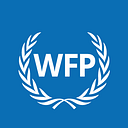How does improving the financial opportunities of women affect women’s empowerment?
By Emma Frankham (Technical Writer, DIME, World Bank) — with inputs from colleagues from the CBT & Gender Window
The Updates from the Field blog series highlights research generated from an innovative partnership between the World Food Programme’s (WFP) Office of Evaluation (OEV) and the World Bank’s Development Impact Evaluation (DIME). The partnership uses impact evaluation to understand how WFP programmes are helping families around the world. As the world recovers from COVID-19, credible evidence matters more than ever. Impact evaluations answer an immediate need for timely and credible evidence to inform more effective humanitarian responses. They assess the positive and negative, direct and indirect, intended and unintended changes to the lives of people served by WFP programmes. In this series, you’ll learn about the challenges researchers are facing, the solutions being explored, and how research can have a meaningful impact on how WFP delivers programming to families and communities worldwide. Along the way, we’ll explore topics including climate change and resiliency, women’s empowerment, school-based programmes, and nutrition.
Impact evaluations are nested within thematic “windows”. Each window aims to support at least six impact evaluations. The goal is to allow WFP’s country offices to learn what works in a way that informs programming and contributes to a global evidence base.
First, this series explores the Cash-Based Transfers and Gender Impact Evaluation Window. The goal of this Window is to gather evidence on the effectiveness of cash transfers and to understand the impacts of any additional programming (provided alongside cash transfers) in achieving gender equality and women’s empowerment. The first set of impact evaluations selected for the Window examines the impacts of providing women with cash transfers and opportunities to work. Project Investigators from the World Food Programme, the World Bank, and American University are collaborating on this Window.
Generating more evidence on the gender impacts of cash transfers is crucial as WFP’s cash transfers portfolio (cash and vouchers) has grown from 1% of total food assistance in 2009 to 37% in 2020 (US$2.134 billion), helping 38.4 million people across 67 countries.
Measuring empowerment impacts in Isiolo, Kenya
Isiolo County, in Eastern Kenya, is one of DIME and OEV’s impact evaluation sites. Of the 268,000 people who live there, 65% are in extreme poverty and live on less than US$1.90/day. The main source of income for families is the sale of livestock and livestock products. The COVID-19 pandemic and accompanying restrictions have been additional drivers of poverty and food insecurity (not having access to sufficient, safe, and nutritious food on a daily basis).
To help individuals to develop a sustainable income, WFP and USAID operate the Sustainable Food Systems Programme across Kenya, with almost 1,200 recipient families in Isiolo County.
The programme provides cash transfers and poultry or pasture support (such as training on poultry rearing or land management). Programmes like this that foster the ability of individuals to achieve a sustainable income, can be critical as the frequency and severity of economic shocks and stressors to communities, such as the COVID-19 pandemic, increase.
To test the impacts of involving women in work outside the household, the project contrasts three distinct modalities:
- A group targeting men, providing cash transfers and providing pasture training and support (which is traditionally male-dominated).
- A group targeting women, providing cash transfers and providing poultry training and support (which is traditionally female-dominated).
- A control group, who will receive support later in 2022 once additional funds become available.
To assess programme impacts, households involved in these different programmes will be interviewed before, during, and after programme participation.
The impact evaluation assesses the shorter and medium-term impacts for women participating in the programme (find more on the research design here). Women’s participation impacts their time use and earnings. In turn, we anticipate these changes will impact women’s empowerment through changes to autonomy, attitudes towards women, and well-being (including mental health and intimate partner violence).
Shifts in these outcomes could indicate that changes to how much time women spend working, and receiving financial support through cash transfers, impacts family norms and decision making.
“Are we going the extra mile?” Read more about impact evaluation.
If you would like to receive updates on new blogs, events or impact evaluation publications, please fill in this form to receive regular updates or contact oev.impactevaluation@wfp.org for more information.
